October 1983: Corsica, France
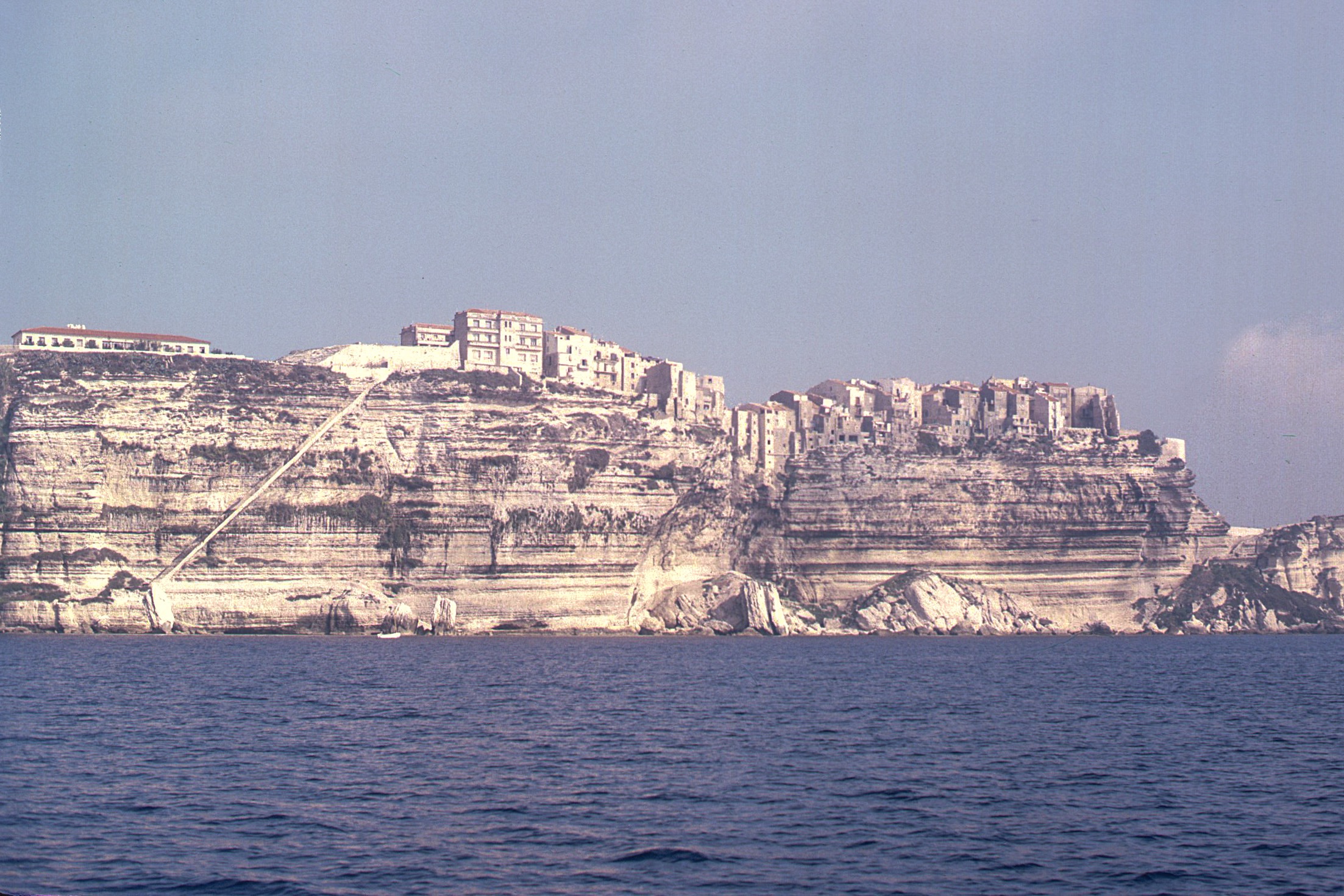
In October 1983, French scientists Catherine Gautier (California Space Institute, La Jolla) and Michèle Fieux (Laboratoire d’Oceanographie Physique, Paris) organised a NATO1 sponsored Research Workshop on the island of Corsica entitled “Large-Scale Oceanographic Experiments and Satellites”.
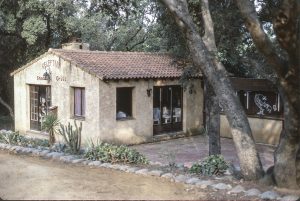 Where were we? The venue for NATO Workshops is supposed to be remote so that the participants can’t wander away from the meeting! Arriving in Corsica on a specified flight from Paris, we were taken by coach to the venue location, which I remember as a time-share tennis club, where we arrived in darkness. I still don’t know where it was and can’t locate it on the island. It was remote, we were all given flashlights so we could find our way to the chalets without getting lost in the surrounding maquis. I was sharing with Peter Minnet from the Rutherford Appleton Lab.
Where were we? The venue for NATO Workshops is supposed to be remote so that the participants can’t wander away from the meeting! Arriving in Corsica on a specified flight from Paris, we were taken by coach to the venue location, which I remember as a time-share tennis club, where we arrived in darkness. I still don’t know where it was and can’t locate it on the island. It was remote, we were all given flashlights so we could find our way to the chalets without getting lost in the surrounding maquis. I was sharing with Peter Minnet from the Rutherford Appleton Lab.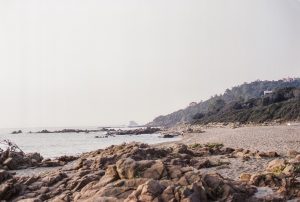
Oceanographers don’t wear ties! Scientists dress very informally at such meetings but one still felt over dressed carrying a brief case and laptop to the meeting room past nude sunbathers on the beach. Our informality became of more concern when we were invited to an evening meal hosted by the local Dignitaries who were rumoured to have Mafia associations and who would undoubtedly be formally dressed. We decided to explain to our hosts that it was a long tradition that oceanographers don’t wear ties.
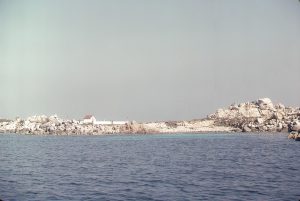 The Goat. The arranged excursion for the meeting was a picnic on one of the islands between Corsica and Sardinia. We left Bonifacio with the boat laden with all the food and crates of wine that a proper French picnic demands. However soon out of the port we were intercepted by a French Police patrol boat. A considerable discussion ensued with much arm waving before, much to our concern, all the food and wine was transferred to the Police launch which then sped away.
The Goat. The arranged excursion for the meeting was a picnic on one of the islands between Corsica and Sardinia. We left Bonifacio with the boat laden with all the food and crates of wine that a proper French picnic demands. However soon out of the port we were intercepted by a French Police patrol boat. A considerable discussion ensued with much arm waving before, much to our concern, all the food and wine was transferred to the Police launch which then sped away.
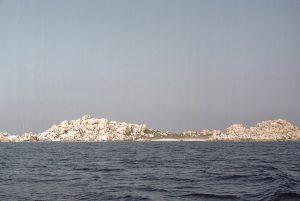 Our own boat continued to a small uninhabited island which we understood was a nature reserve on which we had permission to land. Looking at Google Maps, I think this must have been the Ile Ratino. If so then the antiquities which we were shown during a walk across the island would have been the cemetery possibly dating back to the wreck of the French frigate Sémillante in 1855. On reaching the other side of the island, and the proposed site of our beach picnic, we saw the Police launch anchored offshore.
Our own boat continued to a small uninhabited island which we understood was a nature reserve on which we had permission to land. Looking at Google Maps, I think this must have been the Ile Ratino. If so then the antiquities which we were shown during a walk across the island would have been the cemetery possibly dating back to the wreck of the French frigate Sémillante in 1855. On reaching the other side of the island, and the proposed site of our beach picnic, we saw the Police launch anchored offshore.
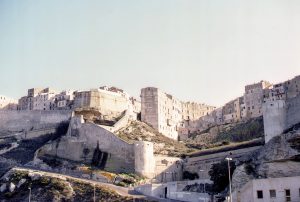 It was explained to us that, although the island was uninhabited it did house a single goat. Had the excursion boat landed our picnic on the beach it would have been certainly devoured by the goat. So the Police launch had protected our food while we were shown the island!
It was explained to us that, although the island was uninhabited it did house a single goat. Had the excursion boat landed our picnic on the beach it would have been certainly devoured by the goat. So the Police launch had protected our food while we were shown the island!
Bonifacio. During the return to Bonifacio our helmsman demonstrated marvellous boat skills in taking us into a sea cave which was only just wide enough for is boat. The port is quite spectacular with the buildings rising straight from the precipitous, and in places undercut, cliffs. Visible from the sea (and on the top photo) was the dramatic King of Aragon staircase. Within the town the Citadelle Montlaur is a French Foreign Legion base.
1The NATO Science Committee sponsors activities aimed at dissemination of advanced scientific knowledge with a view to strengthening the links between scientific communities. Over the years I’ve attended an Advanced Study Workshop on the Isle of Man, been sponsored for 2 months summer school at the University of Washington in Seattle, and attended this Advanced Research Workshop on Corsica. The Proceedings of the meeting were published by D. Reidel in the NATO ASI Series: C. Mathematical and Physical sciences vol. 128.
Gallery (click on thumbnails to view)

![[01] The Meeting Venue](https://seatern.uk/wp-content/uploads/2020/09/01-The-Meeting-Venue-150x150.jpg)
![[02] We Didn't Know Where We Were!](https://seatern.uk/wp-content/uploads/2020/09/02-We-didnt-know-where-we-were-150x150.jpg)
![[03] We Had Our Own Shared Chalets](https://seatern.uk/wp-content/uploads/2020/09/03-We-had-our-own-shared-chalets-150x150.jpg)
![[04] The Local Beach](https://seatern.uk/wp-content/uploads/2020/09/04-The-local-beach-150x150.jpg)
![[05] The Local Beach](https://seatern.uk/wp-content/uploads/2020/09/05-The-local-beach-150x150.jpg)
![[06] The Local Beach](https://seatern.uk/wp-content/uploads/2020/09/06-The-local-beach-150x150.jpg)
![[07] The Local Beach](https://seatern.uk/wp-content/uploads/2020/09/07-The-local-beach-150x150.jpg)
![[08] Excursion Day](https://seatern.uk/wp-content/uploads/2020/09/08-Excursion-day-150x150.jpg)
![[09] Bonifacio From The South](https://seatern.uk/wp-content/uploads/2020/09/09-Bonifacio-from-the-south-150x150.jpg)
![[10] Corsican Coast](https://seatern.uk/wp-content/uploads/2020/09/10-Corsican-coast-150x150.jpg)
![[11] Ile Ratino?](https://seatern.uk/wp-content/uploads/2020/09/11-Ile-Ratino-150x150.jpg)
![[12] On Ile Ratino](https://seatern.uk/wp-content/uploads/2020/09/12-On-Ile-Ratino-150x150.jpg)
![[13] On Ile Ratino](https://seatern.uk/wp-content/uploads/2020/09/13-On-Ile-Ratino-150x150.jpg)
![[14] On Ile Ratino](https://seatern.uk/wp-content/uploads/2020/09/14-On-Ile-Ratino-150x150.jpg)
![[15] The Picnic Beach?](https://seatern.uk/wp-content/uploads/2020/09/15-The-picnic-beach-150x150.jpg)
![[16] Participants](https://seatern.uk/wp-content/uploads/2020/09/16-Participants-150x150.jpg)
![[17] Back Towards Corsica](https://seatern.uk/wp-content/uploads/2020/09/17-Back-towards-Corsica-150x150.jpg)
![[18] Bonifacio From The Strait](https://seatern.uk/wp-content/uploads/2020/09/18-Bonifacio-from-the-Strait-150x150.jpg)
![[19] Bonifacio From The Strait](https://seatern.uk/wp-content/uploads/2020/09/19-Bonifacio-from-the-Strait-150x150.jpg)
![[20] Into A Sea Cave](https://seatern.uk/wp-content/uploads/2020/09/20-Into-a-sea-cave-150x150.jpg)
![[21] Inside The Cave](https://seatern.uk/wp-content/uploads/2020/09/21-Inside-the-cave-150x150.jpg)
![[22] Back To Bonifacio](https://seatern.uk/wp-content/uploads/2020/09/22-Back-to-Bonifacio-150x150.jpg)
![[23] Inside Bonifacio Harbour](https://seatern.uk/wp-content/uploads/2020/09/23-Inside-Bonifacio-harbour-150x150.jpg)
![[24] Corsican Coast](https://seatern.uk/wp-content/uploads/2020/09/24-Corsican-coast-150x150.jpg)
![[25] French Foreign Legion Base In Bonifacio](https://seatern.uk/wp-content/uploads/2020/09/25-French-Foreign-Legion-Base-in-Bonifacio-150x150.jpg)